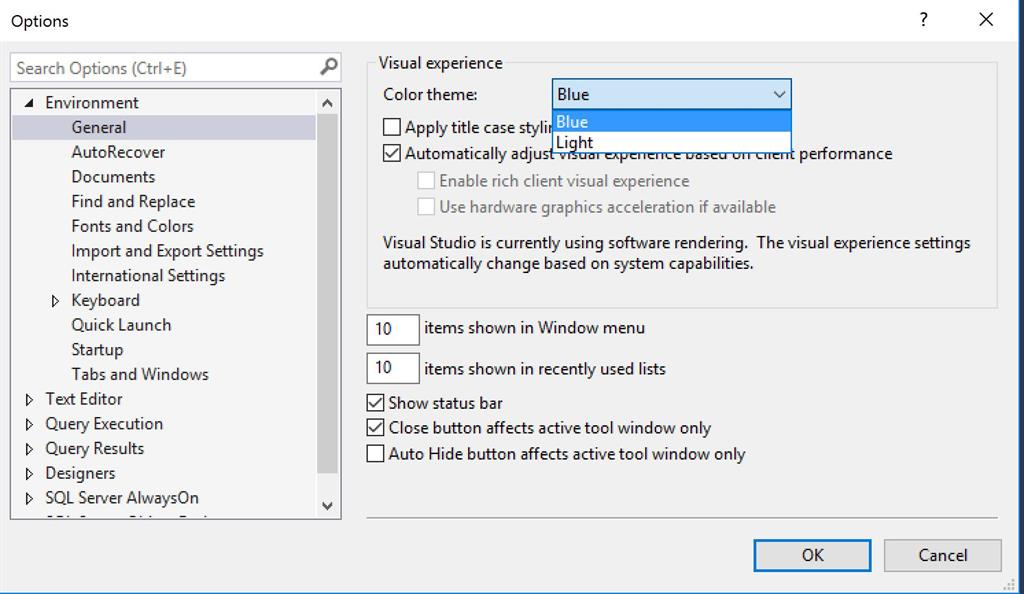
- #Download sql server management studio april 2016 preview how to
- #Download sql server management studio april 2016 preview download
If your source database is a SQL Server database, then you need to run T-SQL queries on the database side then match the results of both sides to prove the data in Tabular Model is correct. The other way is to run DAX queries on Tabular Model side. But, for how many measures and dimensions you can do the above test in Excel? There are many ways to test the system, you can browse your Tabular Model in Excel, connecting to your Data Warehouse in Excel and create pivot tables then compare the data coming from Tabular Model and the data coming from the Data Warehouse.

So your test cases always have two sides, one side is your source database that can be a data warehouse and the other side is the Tabular Model. However it would be still a fairly time-consuming process to run many test cases on Tabular Model, then run similar tests on the data warehouse and compare the results. If you are running a Tabular Model on top of a proper data warehouse then your life would be a bit easier than when you build your semantic model on top of an operational database. In real world SSAS Tabular projects, you need to run many different testing scenarios to prove your customer that the data in Tabular model is correct.
#Download sql server management studio april 2016 preview how to
Sooo… What is new then? Continue reading “What Does XMLA Endpoints Mean for Power BI and How to Test it for Free?” → In that sense, we are literally generating XMLA scripts from Power BI to create the same data model in SSAS Tabular. We can even take a step further to import our Power BI data models into an instance of SSAS Tabular. So, we indeed were using XMLA to connect to Power BI data models for a long time. I first revealed the fact that you can connect to the underlying data model in Power BI Desktop from whole different range of tools like SSMS, SQL Server Profiler, Excel, etc… on Jun 2016. Instance of SSAS Tabular is shut down and its port number is released. Local instance of SSAS Tabular model with a random local port number that canīe accessed on your local machine only. So, whenever you open a Power BI Desktop file (PBIX), Power BI creates a Power BI runs a local instance of SSAS Tabular (SSMS), Power BI Report Builder, Excel, Tableau, etc…, you’re using XMLAĬonnectivity indeed. Multidimensional or Tabular from any tools like SQL Server Management Studio You’re connecting to an instance of SQL Server Analysis Services, either It’s been aroundįor many years and perhaps you’ve already used it zillions of times. So you may connect to a data model, browse the data model, import data from the model to other platforms like Excel and so forth. How XMLA Relates to Different Layers in Power BI?Īs you may have already guessed, XMLA is only related to the data model layer and it has nothing to do with the presentation layer.

The contents of the file Continue reading “Quick Tips: Registering SQL Server Profiler as an External Tool in Power BI Desktop” → If you use a different version, the only thing you have to change is the “path”. If you are using SSMS 18, then you do not even need to modify the file.


#Download sql server management studio april 2016 preview download
After you download the file you can open it in a text editor to see or modify the JSON code. As an external tool, the SQL Server Profiler automatically connects to the data model via the diagnostic port. This is quite handy as this way to use SQL Server Profiler to diagnose Power BI Desktop without needing to find the diagnostic port. Read more about how to register an external tool here. In this quick post, I share a pbitool.json file that you can use to register the SQL Server Profiler as an external tool. I wrote a blog post in June 2016 about connecting to the underlying Power BI Desktop model from different tools, including SQL Server Management Studio (SSMS), Excel and SQL Server Profiler. It has been a long time that I use SQL Server Profiler to diagnose my data models in the Power BI Desktop.


 0 kommentar(er)
0 kommentar(er)
